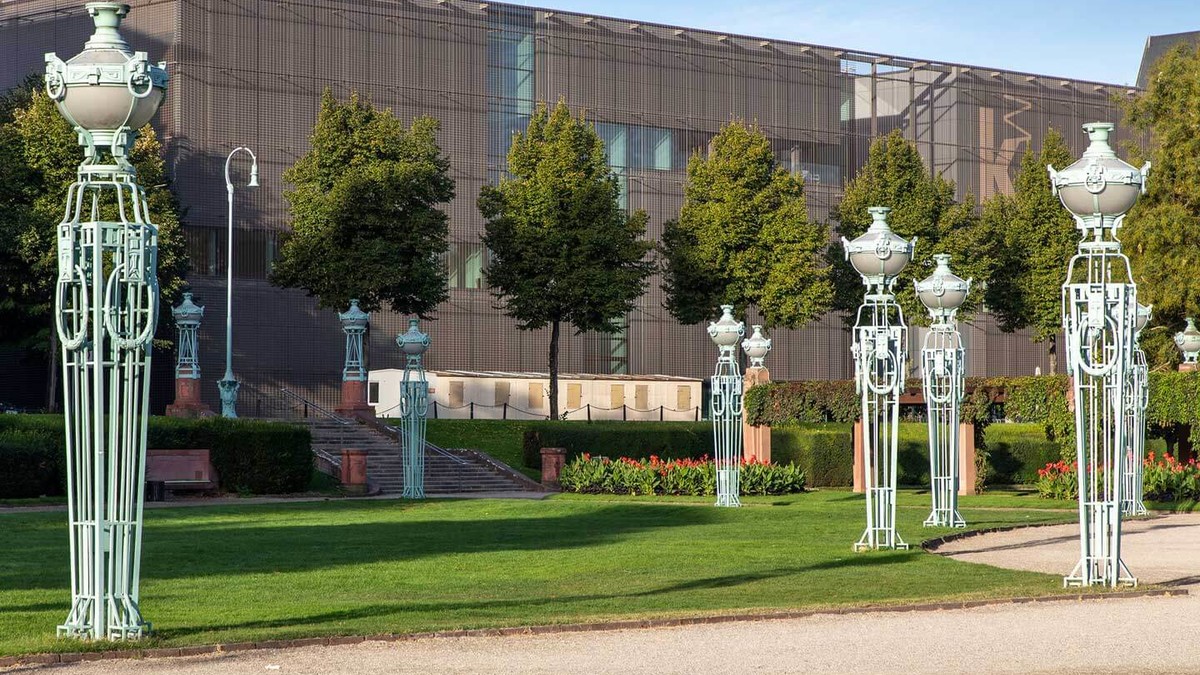#BWStory
Artworks in Their Own Right: SouthWest Germany’s Cities
Architecture is not just for today, but also for the future. New buildings may bring praise – or disapproval. Here are eight cities, where important designs have triggered heated discussions. And for each city, there is a suggested vantage point with great views of the new landmark buildings!
Stuttgart’s City Library
More than just a place to read. From the outside, the building looks like a simple cube. Inside, however, it is bright white, with a structure reminiscent of a pyramid. This colour and life bring books and visitors together under one roof.
When it opened in 2011, the dramatic design split opinions: some even dubbed it the Book Prison. But today, locals are proud of the landmark that has been rated among the 20 most beautiful libraries in the world by The Time magazine – Germany’s only library on the list! As well as book lovers, architecture fans come to see Cologne-based architect Eun Young Yi’s building on Mailänder Platz. And as night falls, the white exterior is transformed; the windows start to glow a deep blue. It looks like a gigantic art installation!
Great viewpoint: The highest point in the inner city is the 1,675-ft/511-m Birkenkopf. The local nickname, Monte Scherbelino, refers to the rubble dumped here after World War Two. Even today, the remains of destroyed buildings are visible on the summit, a popular hiking destination.
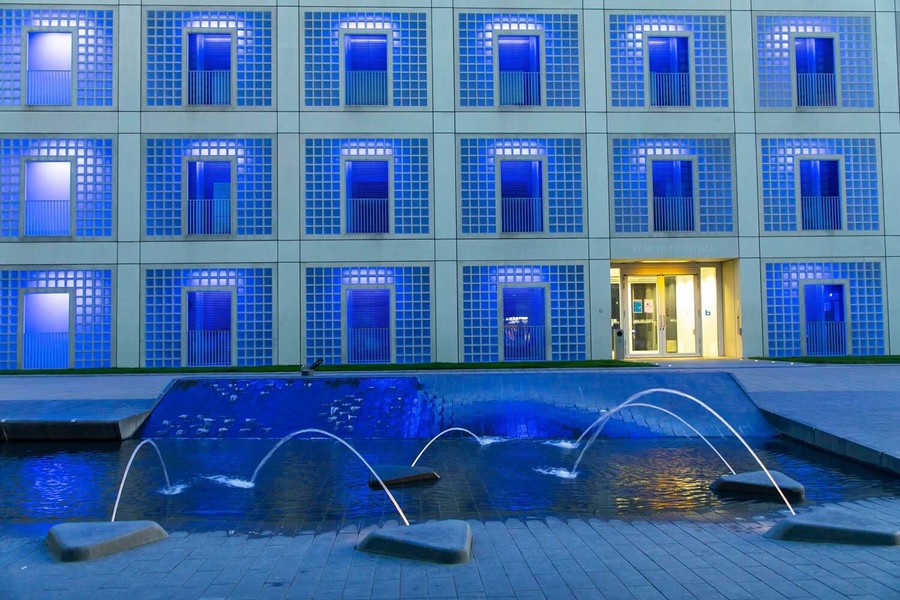
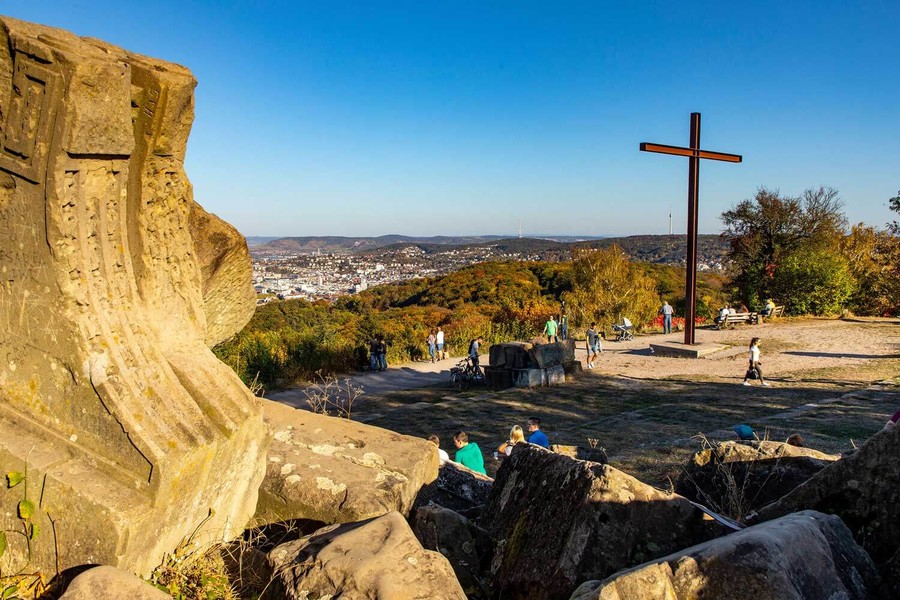
Freiburg’s University Library
The city has long been known for its medieval cathedral. Now, locals look forward to a “Bilbao effect”, thanks to the opening of the Unibibliothek (UB). Standing like a polished black diamond near the city theatre, its façade reflects surrounding buildings.
Yet there have been problems. Freiburg is Germany’s sunniest city and some motorists were dazzled by the sun reflecting off the exterior. The answer? Draw the curtains. As for the interior, the lounge area has designer armchairs, while the 1,200 work stations even have security locks for laptops. Studying has never been more attractive.
Great viewpoint: The Freiburger Wasserschlössle looks like a fairy-tale castle, but is actually just a huge water tank with an impressive façade. Once you get to the top, you have wonderful views of the old town and the UB university library.


Heidelberg’s Bahnstadt
This project is spectacular. In the middle of Heidelberg, apartments and jobs are being created for more than 10,000 people. As the world’s largest “passive house” estate, the Bahnstadt offers a model for sustainable living far beyond Germany.
On what was once a freight yard, Bahnstadt offers both a variety of living spaces and a variety of solutions to modern problems. Take ventilation and energy use. With their complex ventilation systems, the houses don’t need traditional heating. They use 50 to 80 percent less energy than conventional buildings. So, they comply with the strict “passive house” standard of energy efficiency.
Great viewpoint: The largest and most important church in Heidelberg is the Heiliggeistkirche, the Church of the Holy Spirit. Standing on the market square, in the heart of the Old Town, its tower offers a terrific panorama. From the visitor platform, about 125 ft/38 m high, the view takes in the city's rooftops, the Rhine valley and the castle.


Karlsruhe’s Platz der Grundrechte
On the Platz der Grundrechte, Karlsruhe’s Constitutional Rights Square, the artist Jochen Gerz has installed 48 signs. Each has its own statement; all reflect the overall theme of rights and justice for the individual in a democracy.
Yes, there has been criticism, though not about the artist’s work, but rather its location. Some, such as the Karlsruhe Cityscape group, complain that the signs ruin the view from the marketplace to the castle. Others, such as the Green Party, say that the installation gets in the way of cyclists. This unusual art installation is a gift to mark the 50th anniversary of the Federal Constitutional Court. The signs will continue to put across serious ideas for the general public to think about.
Great viewpoint: In Durlach, a suburb of Karlsruhe, the ruined tower at the top of the Turmberg, or Tower Hill, offers fine views over the city. If you do not want to hike up the mountain, take the historic funicular that opened back in 1888.
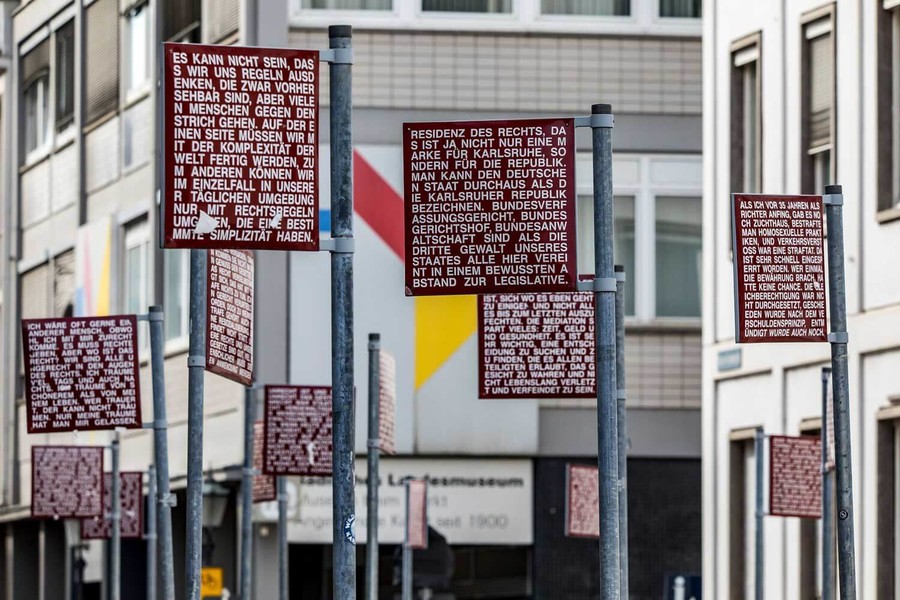
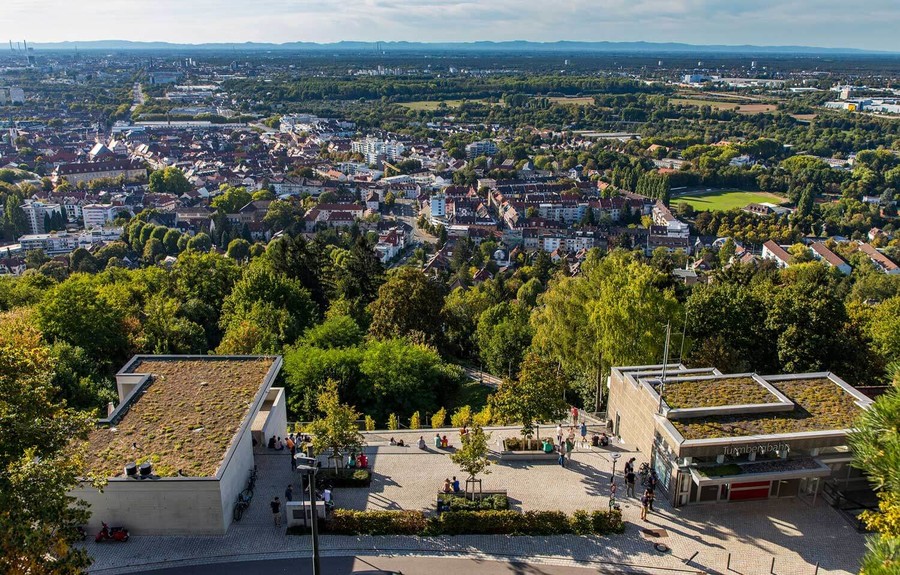
Mannheim’s New Art Gallery
“A city within a city”. That is both a concept and an invitation to the Kunsthalle Mannheim, the city art museum. In 2017, it opened an extension, which faces Friedrichsplatz, Mannheim’s most beautiful square. Not everyone finds the metal mesh on the outer façade “friendly”. Critics argue that this "temple of art" is too jarring a contrast with the Art Nouveau architecture around the square, especially the romantic Wasserturm, or water tower. Others, however, appreciate the restraint of the building.
Inside, the museum is spacious and bright. Around the 72-ft/22-m high atrium, 13 exhibition “cubes” are grouped on three levels. Visitors stroll through galleries, over bridges and across terraces into rooms, where art is presented rather than celebrated.
Great viewpoint: At 715 ft/218 m high, the Telecommunications Tower is one of the tallest in Germany. The viewing platform is over halfway up; just above is the Skyline Restaurant. Taking an hour to rotate through 360 degrees, it offers breakfast, lunch, dinner – and great views over the region.

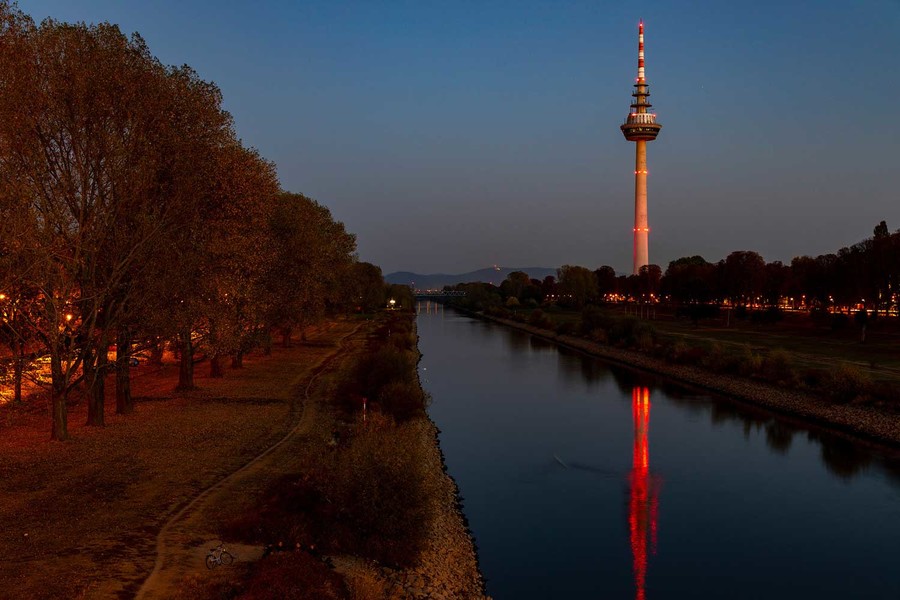
Pforzheim’s Technisches Rathaus
The architecture of post-war reconstruction. In 1957, architect Hans Schürle designed the Technisches Rathaus, Pforzheim’s town hall. Now listed, this is considered one of the city’s best buildings. But it was not always valued so highly. Some members of the city council thought that it should be redeveloped as a shopping centre and that the cost of renovation was too high; still others suggested demolition. It was saved when citizens protested, accusing the council of “selling off the family silver”.
In World War Two, 80 percent of the city was destroyed. The Technisches Rathaus exemplifies the 1950s, a reminder of the era when the city was rebuilt.
Great viewpoint: On top of Büchenbronn Hill, near Pforzheim, stands an 85-ft/26-m tall metal tower. Those, who have a head for heights, can enjoy great views of the city and the Technisches Rathaus town hall.


Baden-Baden’s Frieder Burda Museum
An architect with cult status. Before this project, the New Yorker Richard Meier had already designed the Getty Museum in Los Angeles and the Museum of Contemporary Art in Barcelona. He described this severe white building on Baden-Baden’s Lichtentaler Allee as a "translucent villa".
There was fierce criticism of this Private Public Partnership (PPP), with its funding provided by a combination of private and state money. Even the glass bridge between the Kunsthalle and the Frieder Burda Museum was regarded as a symbol of the opposing opinions. Today, the museum has world-wide appeal. Visitors come to see the art, but also to see the architecture: generous, unpretentious and welcoming.
Great viewpoint: Explore the ruins of the medieval Hohenbaden Old Castle by climbing the numerous stairs, paths and viewing platforms. At every turn, there are new perspectives of Baden-Baden and the surrounding Black Forest.
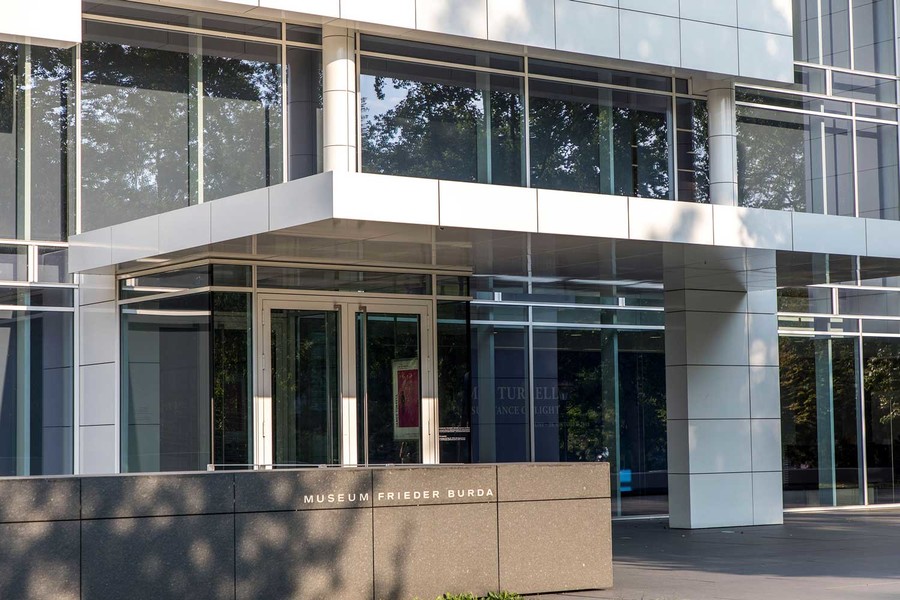
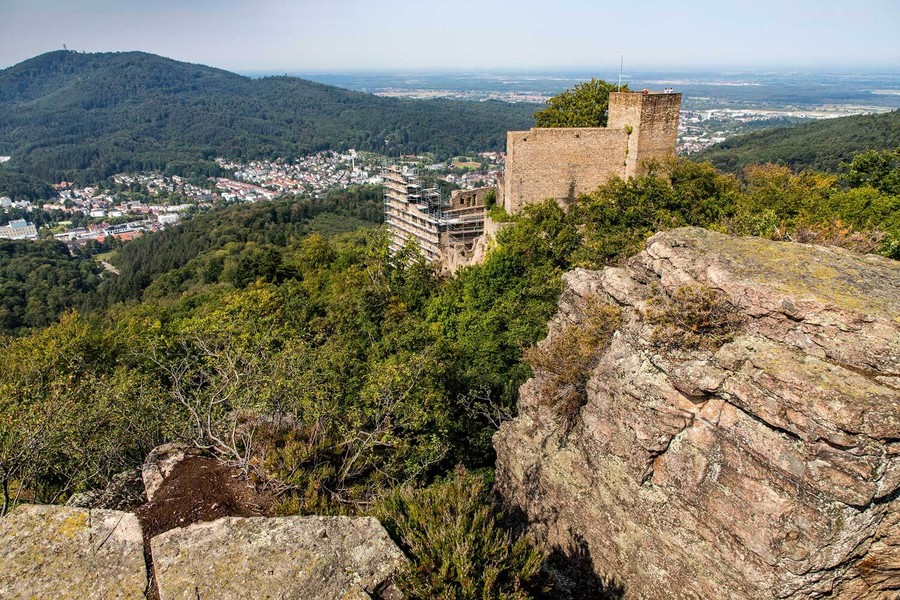
Ulm’s Stadthaus
Where tradition meets modernity. Juxtaposed with the soaring late-Gothic Ulm Minster is the immaculate three-storey, geometric, white "building sculpture". It’s a meeting place for visitors from all over the world.
For more than 100 years, Ulm struggled with designs for the Münsterplatz. The site was considered "one of the most sensitive in the Federal Republic". In 1986, when the city fathers chose a design by New York architect Richard Meier, a storm of indignation broke out. Many believed that the cathedral should be the only building on the square.
Now, after 25 years, the Stadthaus has become an international landmark of modern architecture and an integral part of the cityscape. The construction of this hall and exhibition space was the catalyst for the transformation of the city’s revitalised heart.
Great viewpoint: The Festungsweg is a medieval trail that runs along Ulm’s old fortifications for some 7 miles/12 km. Stroll along; take in the vista of Ulm and New Ulm; read information boards that explain the history of these “twin cities” on the River Danube.



